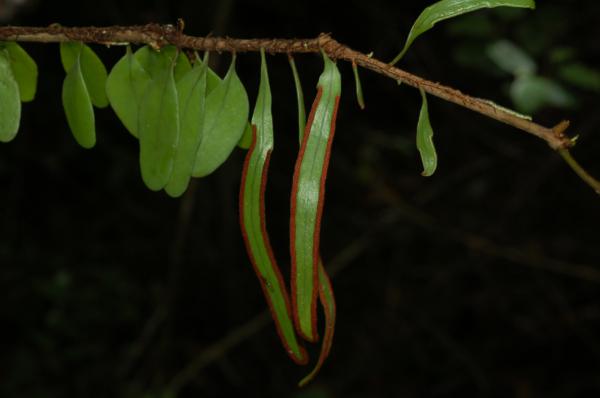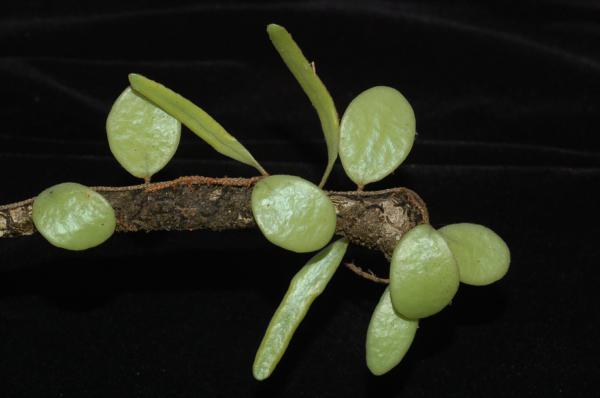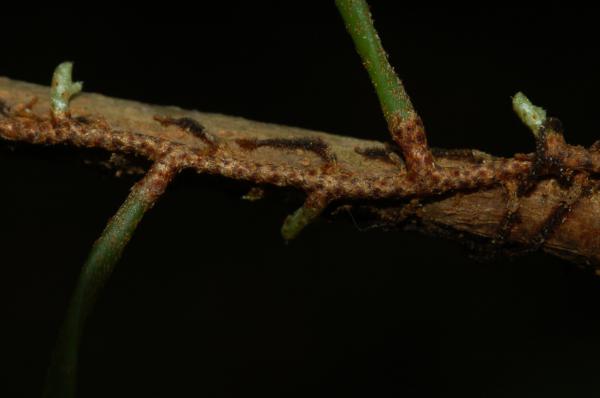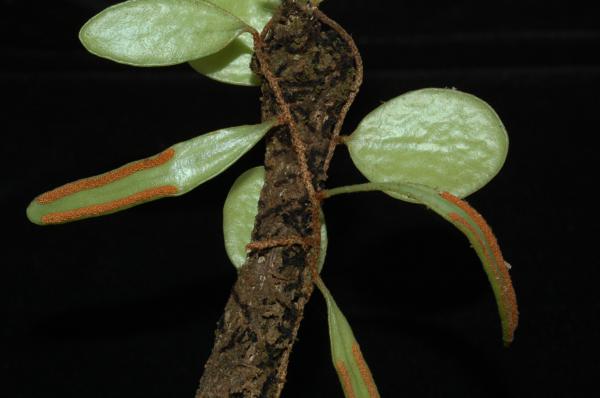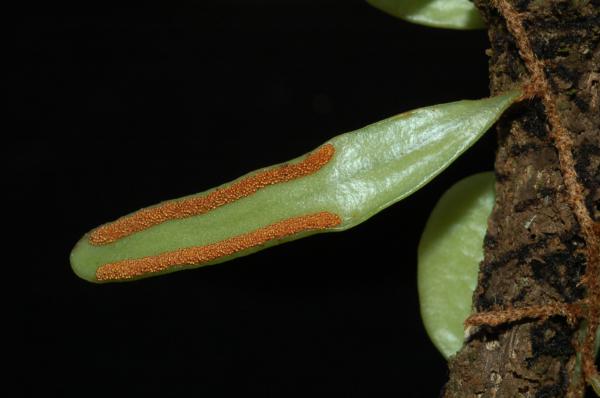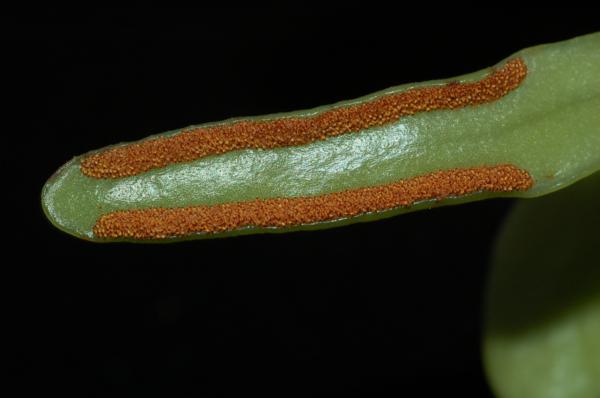
Pyrrosia piloselloides (L.) M.G.Price
Family
Polypodiaceae
Nomenclature
Pyrrosia piloselloides (L.) M.G.Price, Kalikasan 3: 176. 1974; Ravensb. & Hennipman., Leiden Bot. Ser. 9: 302, f. 1, e, j, 2, e, i. 1986; Boonkerd & Pollawatn, Pterid. Thailand: 260, 288. 2000. – Pteris piloselloides L., Sp. Pl. ed. 2: 1530. 1763. – Drymoglossum piloselloides (L.) C.Presl, Tent. Pterid.: 227. 1836; Bedd., Handb. Ferns Brit. India: 411, f. 244. 1883; Christ, Bot. Tidsskr. 24: 105. 1901; C.Chr., Dansk Bot. Ark. 6(3):86. 1929; Tardieu & C.Chr., Fl. Indo-Chine 7(2): 516, f. 60,1. 1941; Holttum, Rev. Fl. Malaya: 149, f. 64. 1955 [‘1954’]; Holttum, Dansk Bot. Ark. 20: 19. 1961; Seidenf., Bull. Nat. Hist. Siam Soc. 19: 86. 1958; Tagawa & K.Iwats., SouthE. Asian Stud. 3(3): 76. 1965, 5: 49. 1967; Tagawa & K.Iwats., Fl. Thailand 3: 490, f. 49.12–13. 1989; Hovenkamp, Fl. Males., Ser. II, Ferns and Fern Allies 3: 167. 1998. – Type: Burman s.n. 1759 (G, herb. Delessert), Java.
Acrostichum heterophyllum L., Sp. Pl. 2: 1067. 1753. – Drymoglossum heterophyllum (L.) C.Chr., Bot. Tidsskr. 32: 348, 1916; Bonap., Notes Ptérid. 14: 63. 1923; E.Smith, J. Siam Soc. Nat. Hist. Suppl. 8: 8. 1929.
Description
Rhizome long creeping, about 1 mm diam., bearing fronds 1.5–4 cm apart, densely scaly throughout; scales small, ovate-oblong, irregularly toothed, up to 1 mm in length and breadth, dark brown in central portion, paler at edges. Stipes very short, a few milimetres long. Fronds simple, distinctly dimorphic. Sterile fronds: laminae nearly circular, oblong or elliptic, round at apex, round to cuneate at base, 1–4(–7) by 1–2 cm; midrib distinct on lower half of fronds, veins hardly visible, anastomosing; coriaceous, both surfaces very sparsely stellate hairy or glabrescent. Fertile fronds: laminae linear-lanceolate, round at apex, gradually narrowing towards attenuate base, 3–15(–25) by 0.3–1.5 cm; midrib distinct throughout, slightly raised on both surfaces, veins anastomosing, with free included veinlets. Sori forming continuous marginal lines up to 2 mm in breadth, covered with stellate hairs when young.
Distribution in Thailand
NORTH-EASTERN: Nong Khai; EASTERN: Chaiyaphum; SOUTH-WESTERN: Kanchanaburi, Prachuap Khiri Khan; CENTRAL: Nakhon Nayok, Bangkok; SOUTH-EASTERN: Chon Buri, Chanthaburi, Trat; PENINSULAR: Chumphon, Ranong, Surat Thani, Phangnga, Krabi, Nakhon Si Thammarat, Trang, Satun, Songkhla, Yala, Narathiwat.
Distribution in Laos
Unspecified.
Distribution in Cambodia
Koh Kong.
Wider Distribution
Himalayas, Indochina, S China (Hainan) and throughout Malesia.
Ecology
Usually on tree trunks in not so dense forests at low altitudes, rather common.
Proposed IUCN Conservation Assessment
Least Concern (LC). This species is common and widespread and not under any known threat.
Voucher specimens - Thailand
Middleton et al. 4611, Trat, Ko Chang, Near Thanmagon Waterfall (E).
Voucher specimens - Cambodia
Viboth R3-72, Koh Kong, Thma Bang (P).
Habit
Habit with sterile (more circular) and fertile (elongate) fronds
Rhizome
Lower surfaces of sterile and fertile fronds
Fertile frond
Sori
Site hosted by the Royal Botanic Garden Edinburgh. Content managed by Stuart Lindsay, Gardens by the Bay, Singapore and David Middleton, Singapore Botanic Gardens. Last updated 24 January 2012
